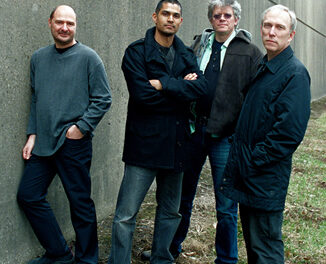On the gusty, gray afternoon of Sunday, January 29, the Meredith College Chorale and String Orchestra* joined forces with the UNC Men’s Glee Club, all under the baton of Lisa Fredenburgh, for a spirited performance of Mozart’s last, albeit unfinished, work as music lovers everywhere celebrate the 250th anniversary of the birth of one of the universally acclaimed geniuses of music history.
It was almost exactly fifty years ago, during the 200th anniversary of Mozart’s birth, that I was first introduced to the Requiem in D Minor, K.626. At the time I was enthralled with the heavy and dramatic romantics from Beethoven to Wagner, Tchaikovsky, Dvorák, Sibelius, and others. As a member of a college glee club, I was not very excited about singing staid and conventional Mozart. My interest was piqued, however, at the prospect of a trip to a women’s college about a hundred miles away, to combine our forces. Then a strange and wondrous thing happened. As we prepared the music, it gradually reached out and captivated me. I looked forward to rehearsals. The opening Introitus became powerful for me, soaring with emotion and meaning. When we got to the phrase “et lux perpetua” near the end of the movement, it seemed that light would indeed shine forth for eternity. We launched into the Kyrie – urgently pleading, yea, demanding mercy. Then I felt the fear, the terror of those who found no mercy as we sang the Dies irae. The day of wrath was awesome and vivid. The majestic Rex tremendae gave me the opportunity to sing full voiced with vigor and focus.
And so it went from movement to movement – as we finished one, the next beckoned with more fascination, more delights, more discoveries. Of course, we did not hear it all in context until the trip, when all the parts were put together. It was the first time I had ever sung behind an orchestra, and I was awestruck. Then we got to hear the soloists and their ensembles bringing more amazement at the charm, mystery, depth, and power of such music. I have never forgotten that experience and how the music gets inside you as you get inside the music you, after which you end up with a treasure that never diminishes but stays and grows as long as you live.
It is my fervent hope that many of the young people who sang so enthusiastically in this performance will have some of the same memories fifty years from now.
It was a fine performance, in spite of the predictable weaknesses of young artists. There were some missed notes here and there, some out-of-tune violin playing in critical passages, some weaknesses in vocal projection, and some melismatic runs that were less crisp than they could have been. That out of the way, the performance as a whole was credible, enjoyable, and moving, and there were some impressive moments. Trombonist Andrew Kleindienst’s solo in the Tuba mirum was very nice. His tone was rich and smooth, and he balanced the dynamics of his sound appropriately, whether playing alone, with the baritone soloist, or blending in with the quartet or the orchestra. The first entrance of “quam olim Abrahae” in the Offertory was as solid as the rock of Abraham. The Sanctus was a truly majestic act of worship. (For some unknown reason – perhaps oversight – the Sanctus and Benedictus were omitted from the program.)
This reviewer was impressed with the conducting of Fredenburgh. Her downbeat or upbeat cues – and the cut-offs – were crisp and clear, and they provided mostly solid entrances – and releases – by the choir and the orchestra. Her conducting style is fluid and expressive and draws dynamic and emotional expression superbly. She obviously knew the score well. She set and maintained fitting tempi throughout. I prefer the a little quicker Dies irae with more fire, but that may come from listening to too much Gardiner and Hickox and Herreweghe.
Soprano Kathryn Godwin, alto Rachel Stenbuck, tenor Pablo Vega, and baritone Brian Parks all did creditable work as soloists and in the ensemble. Their voices blended well and were suited to the solo passages they rendered. The power they lacked will come with time.
A good crowd filled Jones Auditorium and was well rewarded – but not quite as richly, I suspect, as the young artists who put their hearts into this performance. Many of them will perform or hear it again in their lifetimes – possibly many times. And each time Mozart will speak to them afresh offering new understanding of life and beauty.
*Note: Publicity for this event – and the program, too – also listed “members of the UNC Symphony Orchestra and Wind Ensemble,” but players from those organizations appeared as freelancers.
Note 2: Review edited/corrected 2/7/06.











